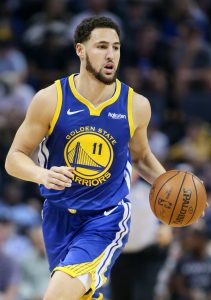A disabled player exception can be granted when an NBA team has a player go down with an injury deemed to be season-ending. The exception gives the club some additional spending flexibility, functioning almost as a cross between a traded player exception and a mid-level exception.
We go into more detail on who qualifies for disabled player exceptions and how exactly they work in our glossary entry on the subject. But essentially, a DPE gives a team the opportunity to add an injury replacement by either signing a player to a one-year contract, trading for a player in the final year of his contract, or placing a waiver claim on a player in the final year of his contract.
Because the rules related to disable player exceptions are somewhat restrictive and the exceptions themselves often aren’t worth a lot, they often simply expire without being used. Still, it’s worth keeping an eye on which disabled player exceptions have been granted, just in case.
We’ll use this space to break down the teams with disabled player exceptions available for the 2020/21 league year, updating it as the season progresses if more teams are granted DPEs and/or to indicate which ones have been used.
Teams have until March 3 to apply for a disabled player exception and until April 19 to actually use them.
Here’s the list so far:
Teams that have been granted disabled player exceptions:
- Golden State Warriors:
- $9,258,000 (Klay Thompson) (story)
The Warriors were granted a disabled player exception following Thompson’s season-ending Achilles tear. Because his salary exceeds $35MM+, Golden State’s exception is worth the amount of the mid-level exception. However, it remains to be seen how enthusiastic the team will be to use it. The Warriors, who are way over the luxury tax line, already project to have the NBA’s most expensive roster in 2020/21.
- Orlando Magic:
- $6,144,349 (Markelle Fultz) (story)
- $3,681,283 (Jonathan Isaac) (story)
Two of Orlando’s young building blocks suffered torn ACLs that will sideline them for the entire 2020/21 season, resulting in a pair of disabled player exceptions for the team. However, the Magic have a full 15-man roster and aren’t far from the tax line, which will limit their options as they consider whether or not to use it.
- Brooklyn Nets:
- $5,727,024 (Spencer Dinwiddie) (story)
Brooklyn received a disabled player exception after Dinwiddie underwent ACL reconstruction surgery. Like the Warriors, the Nets project to have a significant luxury tax bill at the end of the 2020/21 season, so they’ll be careful about using their disabled player exception. Since Brooklyn still has its full taxpayer mid-level exception, the DPE could be more useful on the trade market.
- Miami Heat:
$4,700,000 (Meyers Leonard) (story)
Leonard’s season-ending shoulder surgery paved the way for the Heat to apply for and receive a disabled player exception. However, they forfeited that exception when they agreed to send Leonard to Oklahoma City in a trade for Trevor Ariza.
- Washington Wizards:
- $4,166,666 (Thomas Bryant) (story)
The Wizards were granted a disabled player exception in response to Bryant’s ACL tear. The team doesn’t have the flexibility to use the full exception and remain out of luxury tax territory unless it sheds salary elsewhere.
Photo courtesy of USA Today Sports Images.
